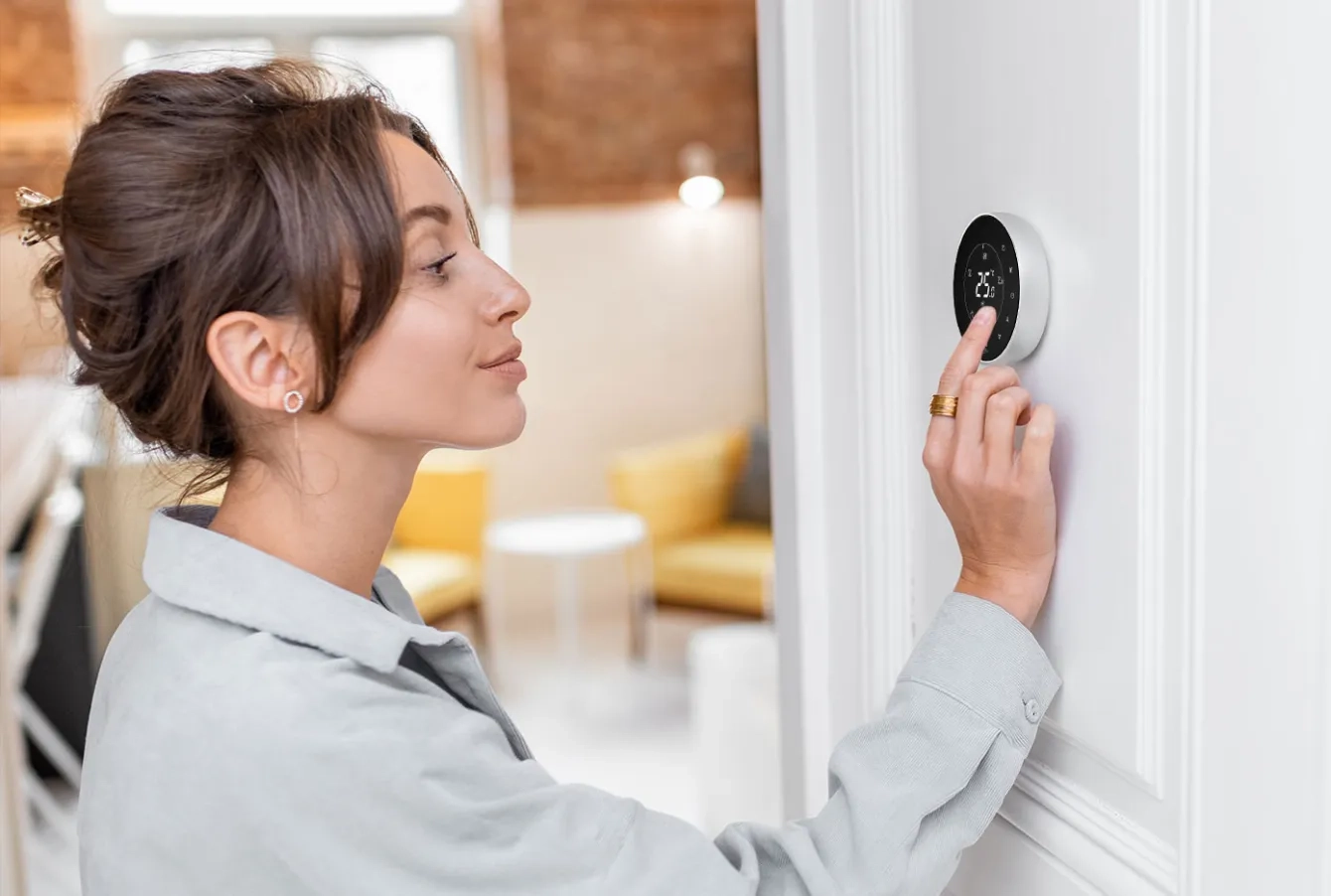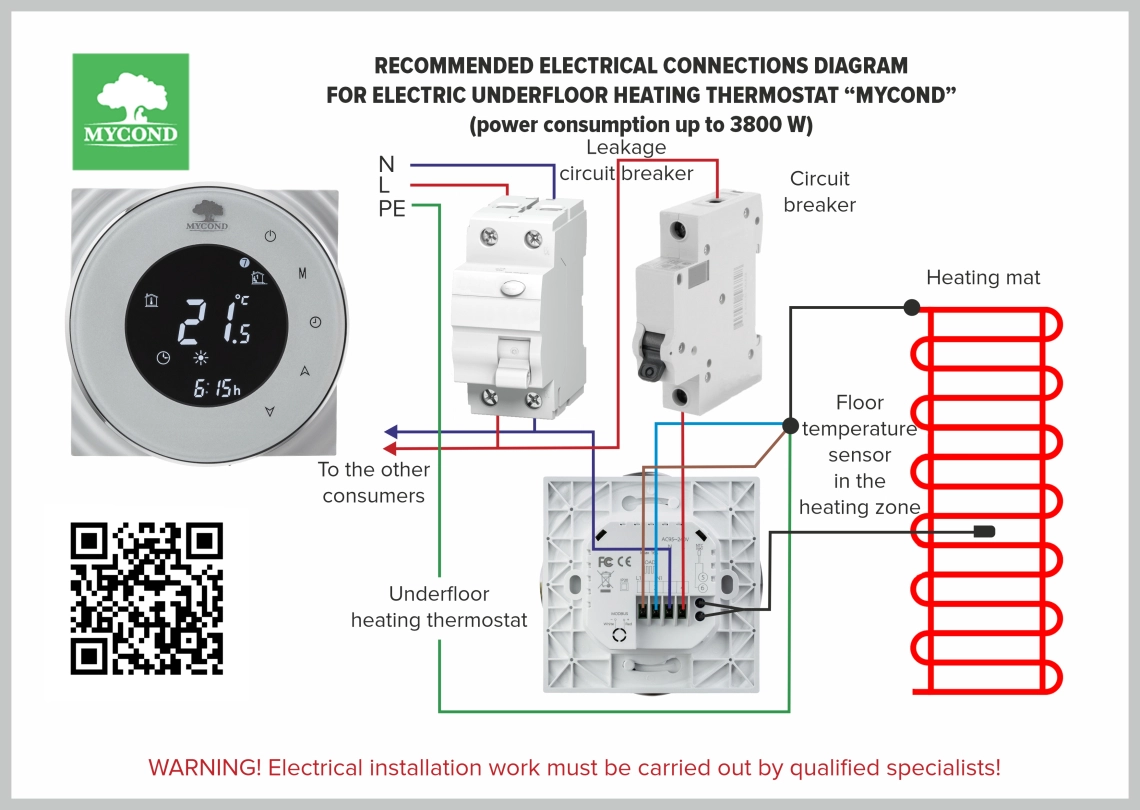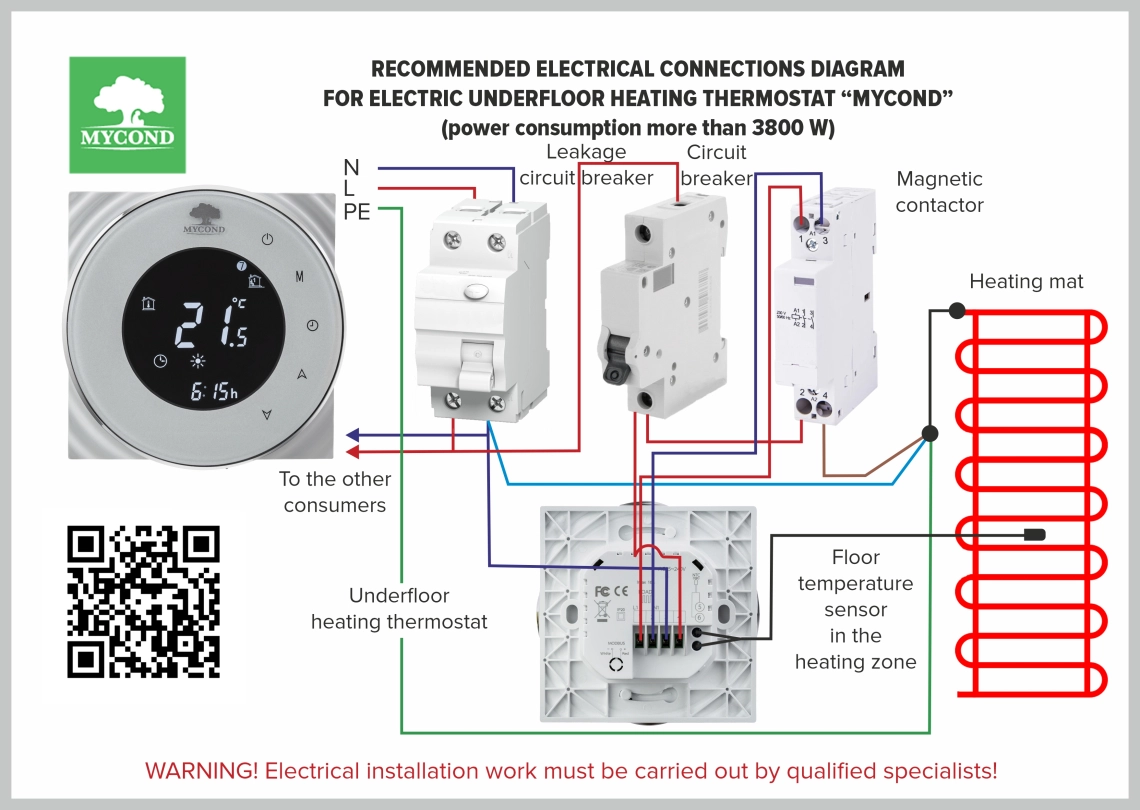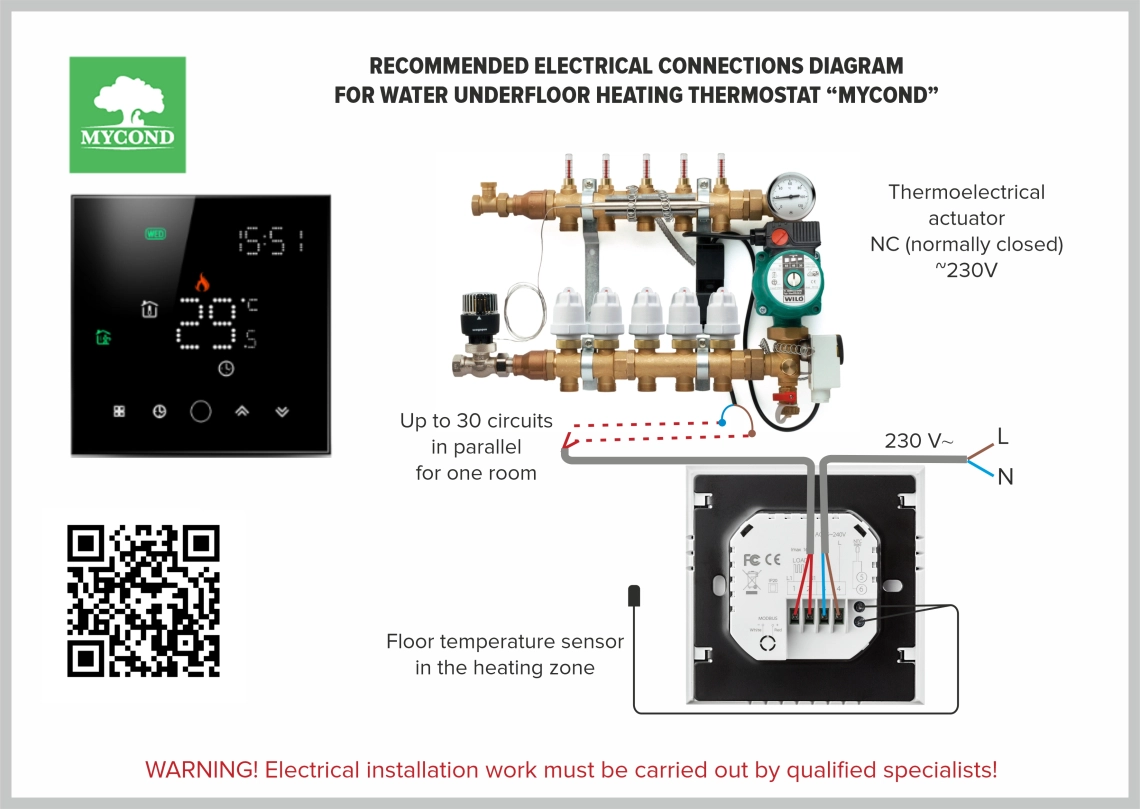
The place where thermostat be installed strongly affects its correct operation. The influence of an excessive source of heat or cold should be excluded.
Therefore, the installation site should be determined based on the following simple rules:
- the thermostat should be located away from heat sources (radiators, sunlight, etc.)
- away from drafts
- at a height of approximately 1.5 m above the floor.

The power cable must be routed from the electrical panel to the thermostat installation location. If you have electric underfloor heating, be sure the cable duct is provided from the floor temperature sensor to the thermostat installation location. Also, don`t forget the cables from the heating mats, films or cables (in case of electric underfloor heating) or from the actuators (in case of water under floor heating), that must be routed to the thermostat installation location too.
In the case of electric underfloor heating (mat, film or cable), the use of a floor sensor is mandatory! It is used to protect the floor from overheating. Also, this floor sensor is necessary if you plan to use different wooden floor coverings (laminate, parquet or parquet board).

Most wood flooring manufacturers recommend a maximum floor temperature of 26-28 to maintain warranty. This information can be found on the appropriate product label.

Here are some of them:
The floor temperature sensor must be mounted inside a pipe previously laid inside the floor at a distance of 50 cm from the wall. It must be placed away from heat sources (sun, radiators, etc.). Be sure to seal the end of the pipe on the floor side. Avoid too large angles, otherwise it will be very difficult to pull the cable. If the installation is done without a pipe, then replacing the sensor will be very difficult and expensive.